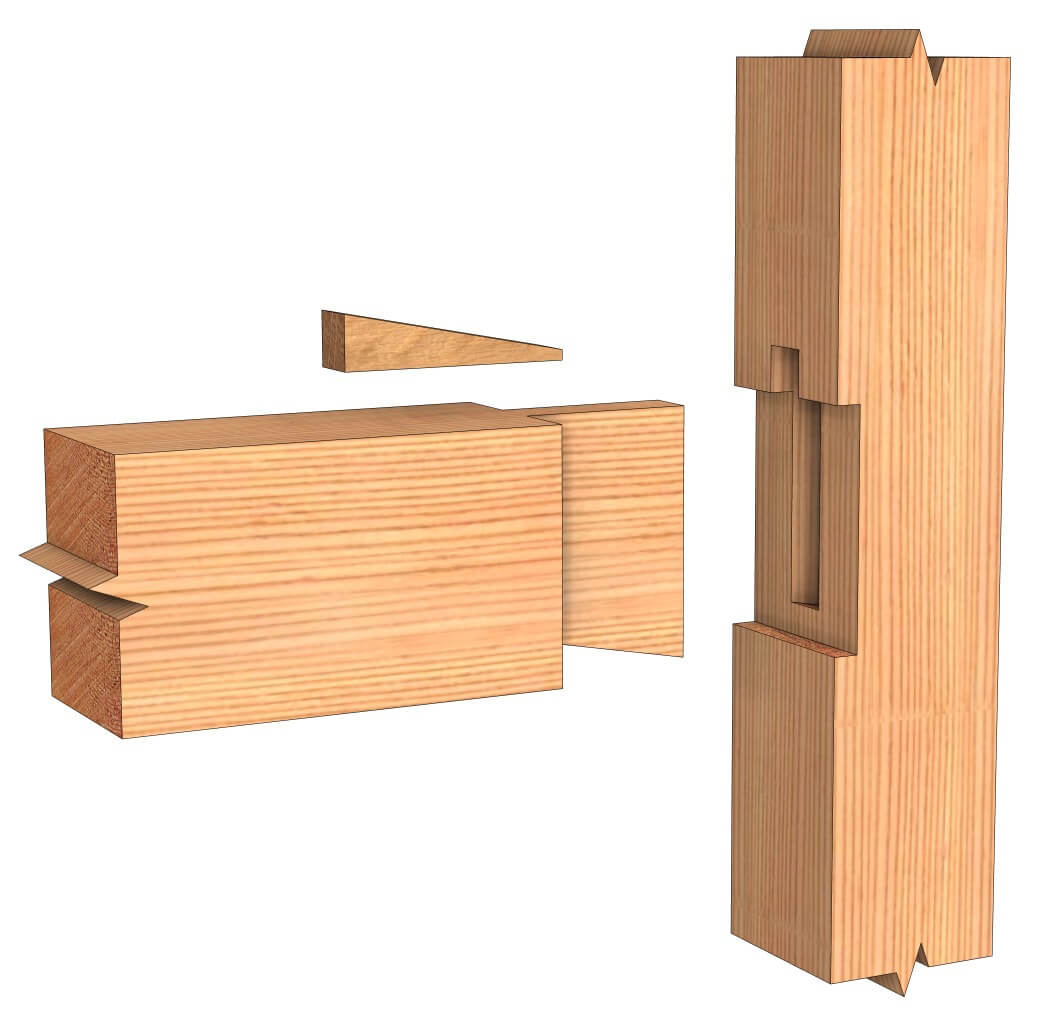
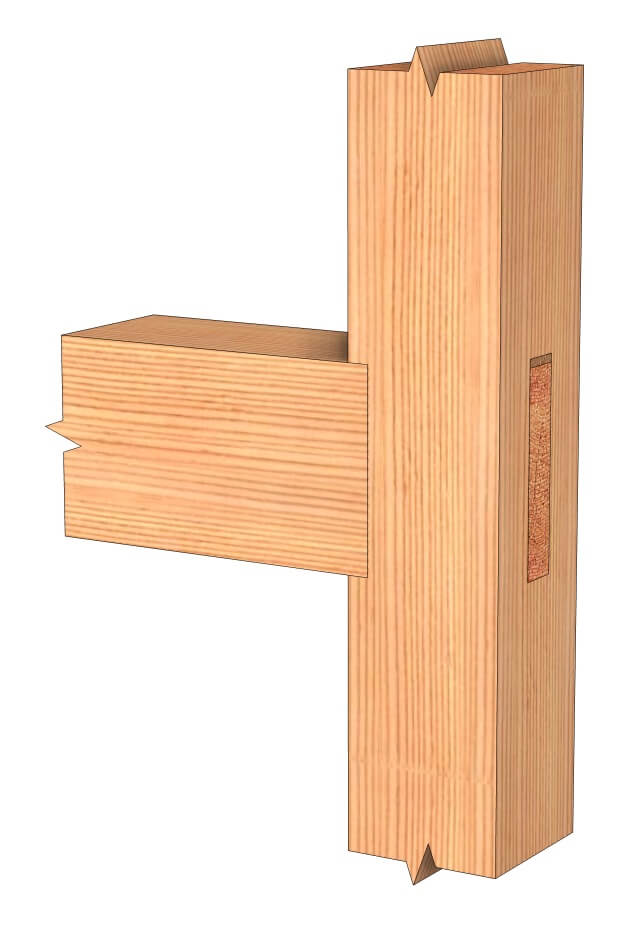
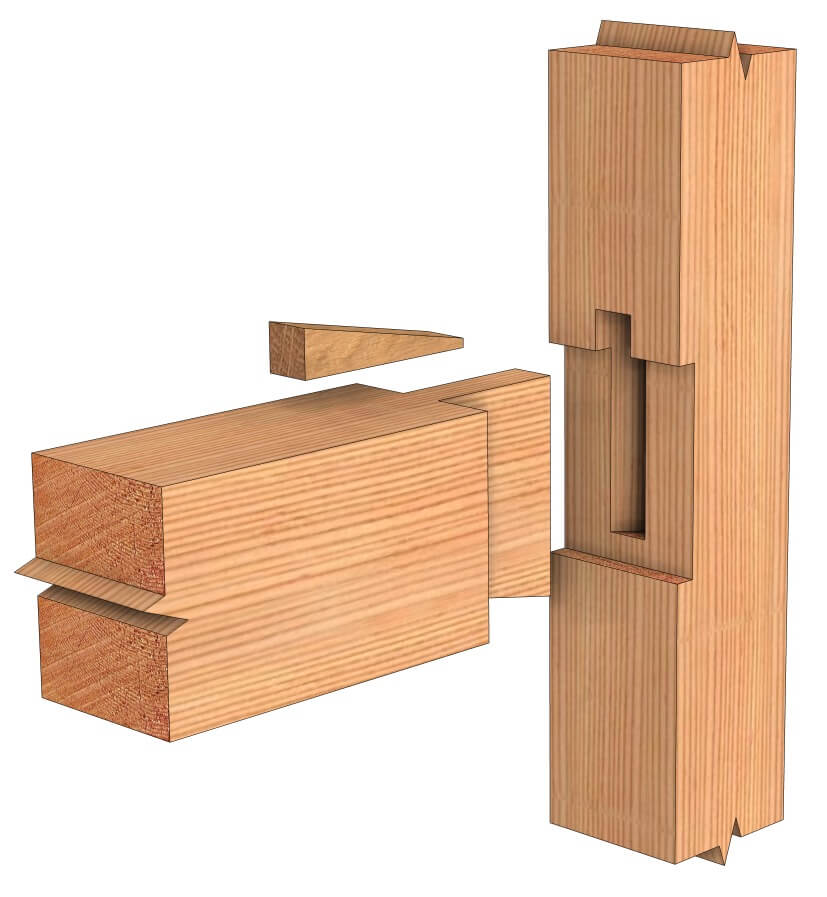
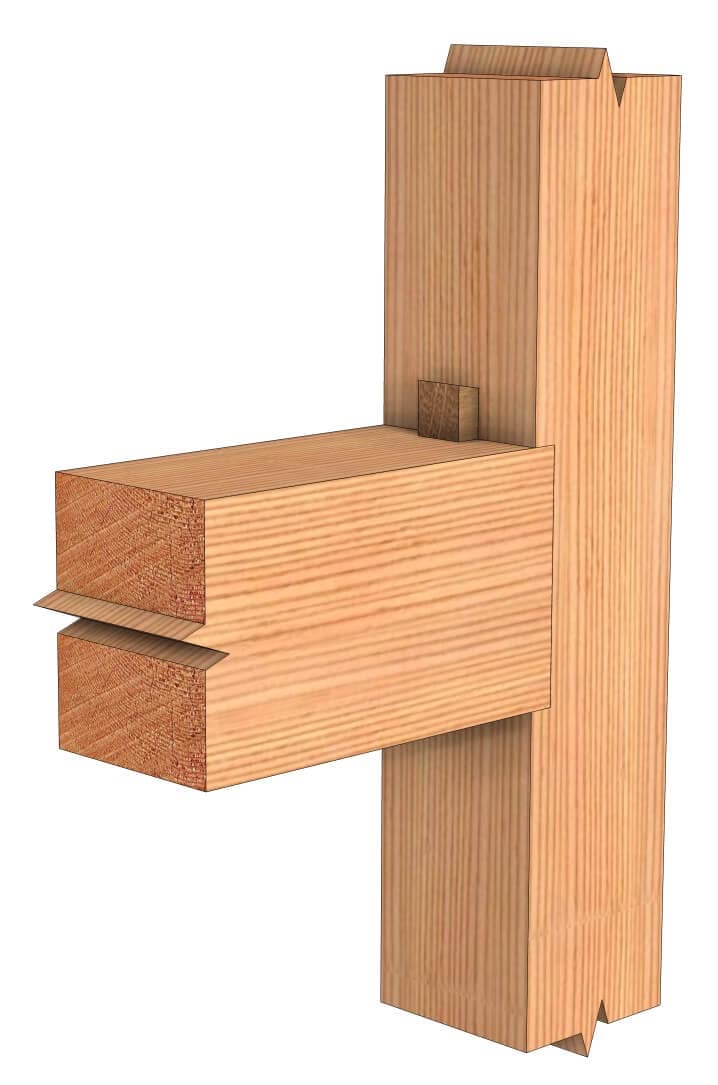

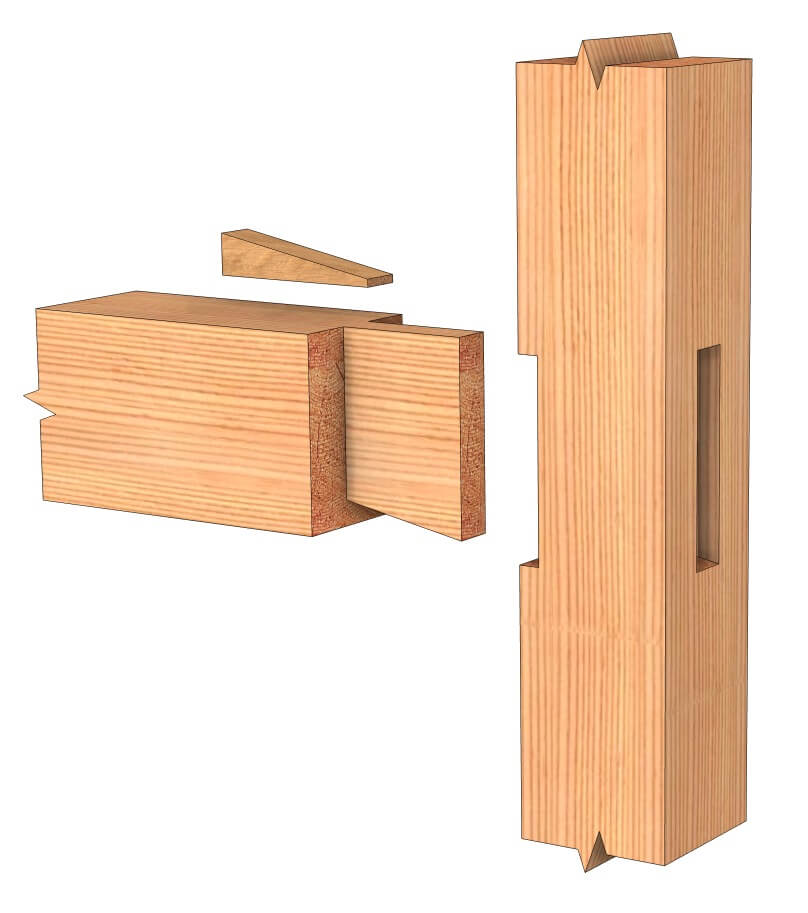
The wedged mortise and tenon joint is a classic and enduring method in timber framing, known for its strength and durability. This joint consists of a tenon, or tongue, that fits snugly into a corresponding mortise, or cavity, cut into a beam or post. A wedge is then driven into a slot cut through the tenon, expanding the joint and locking it in place.
Variations of the Wedged Mortise and Tenon Joint
This joint has several variations, each suited to different applications in timber framing. A through tenon extends entirely through the post or beam, allowing the wedge to be visible on the opposite side. This type is often used where maximum strength is required. On the other hand, a blind tenon does not extend through the beam, creating a more seamless appearance while still providing substantial strength.
Advantages of the Wedged Mortise and Tenon Joint
One of the key advantages of this joint is its ability to self-tighten over time. As the wood shrinks, the wedge exerts additional pressure on the tenon, ensuring the joint remains tight and secure. This makes it particularly valuable in structures that experience significant seasonal changes.
Historical Context and Modern Applications
Historically, the wedged mortise and tenon joint have been used in various structures, from medieval cathedrals to traditional barns. Its longevity is a testament to its effectiveness. This joint is still widely used in modern timber framing, particularly in custom projects where strength and aesthetic appeal are paramount.
Best Practices for Cutting the Joint
Precision is crucial when cutting a wedged mortise and tenon joint. The mortise should be slightly longer than the tenon to allow room for the wedge, and the tenon should fit snugly into the mortise before the wedge is inserted. Using sharp tools and taking care during layout and cutting will result in a clean, strong joint.
Conclusion
The wedged mortise and tenon joint remains a timber framing cornerstone, offering historical significance and modern-day practicality. Whether you're working on a traditional project or a contemporary design, this joint provides a reliable, time-tested solution that adds strength and character to your structure.
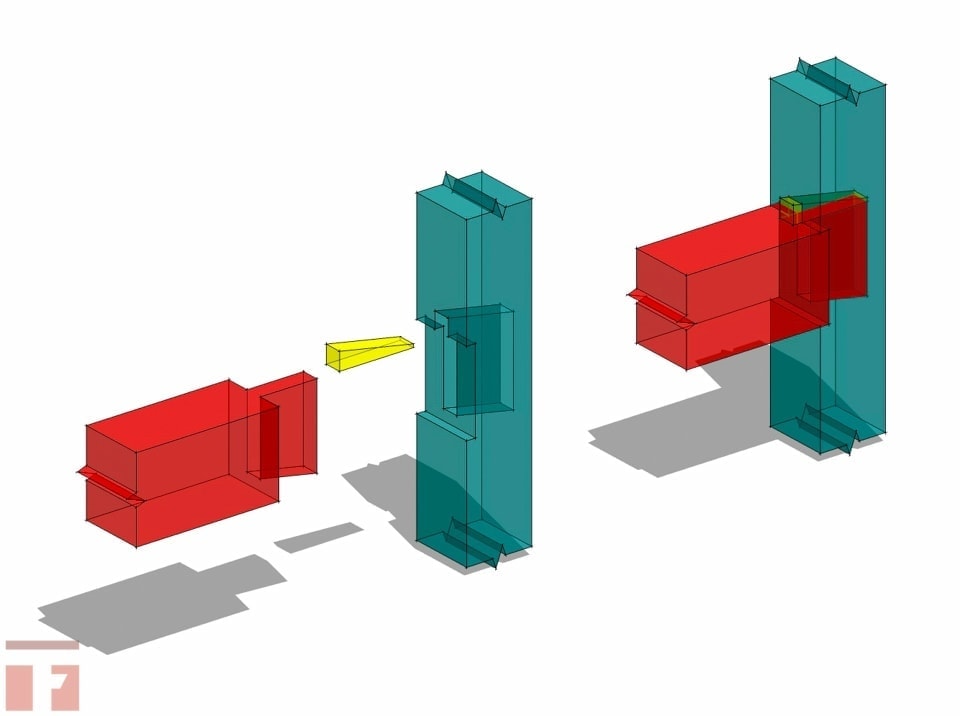
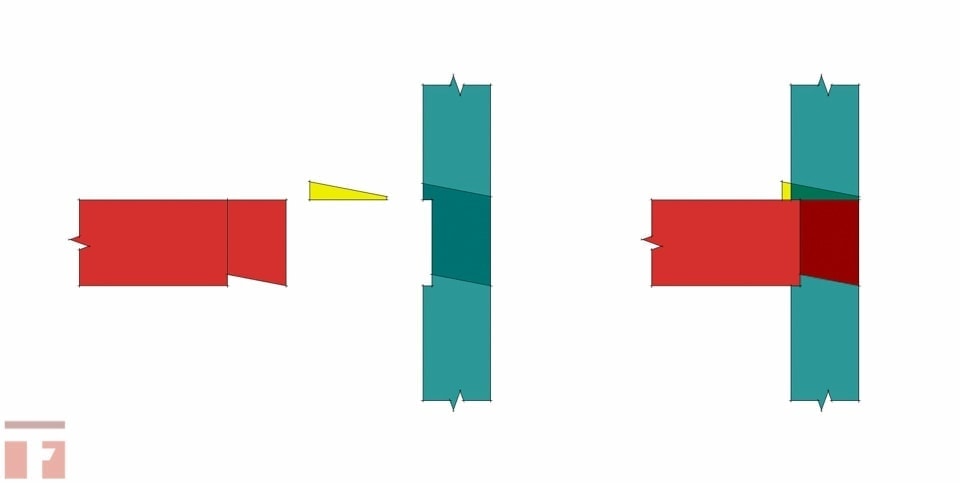
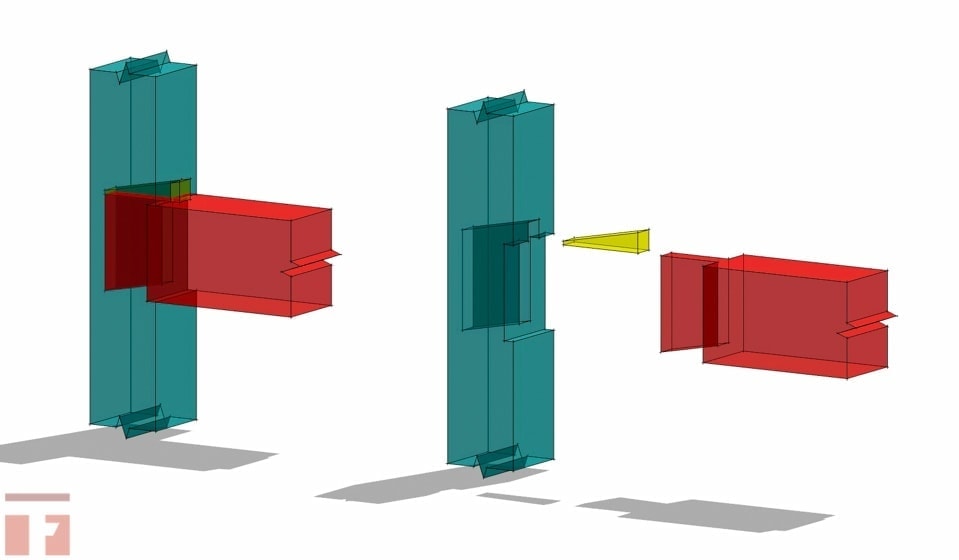
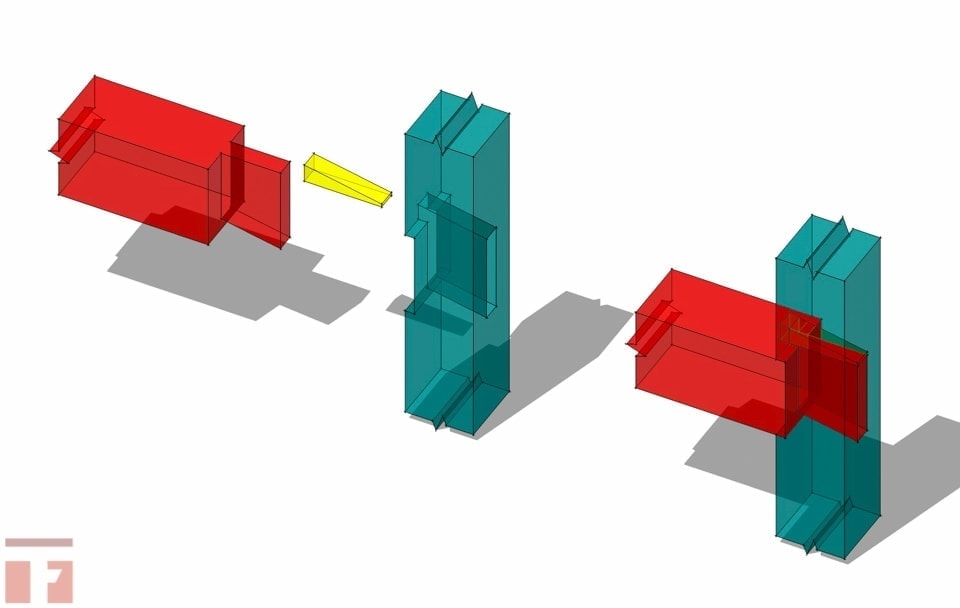
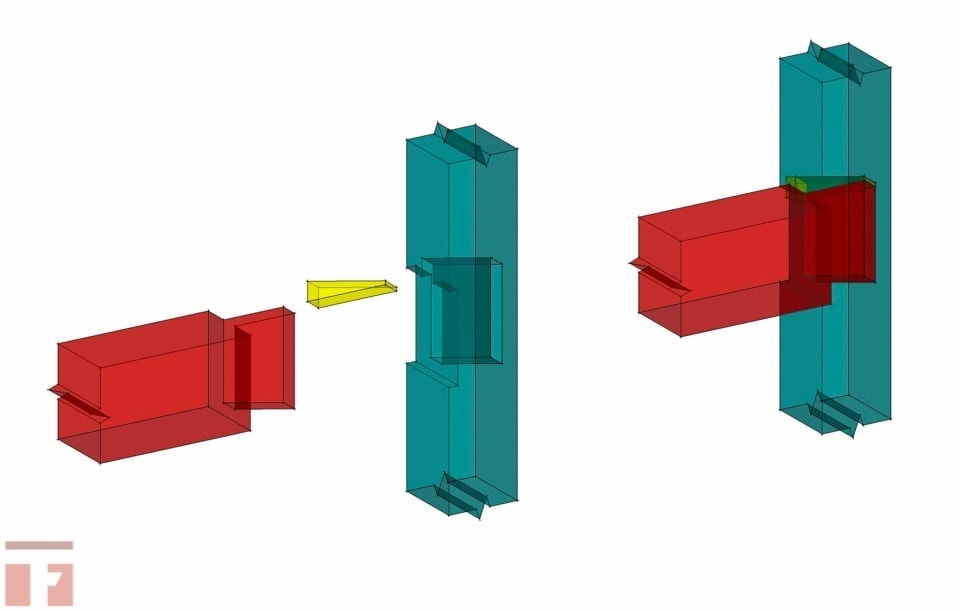

What is the best and most efficient way to cut a thru mortise and tenon wedged joint
Greg,
Whether you use a drilling rig or a chain mortiser it is best to layout the joint at both ends and mortise it out from both ends. This allows for proper alignment and a clean looking joint. A chain mortiser would be the most efficient way to cut the joint, but I have cut many with a drill bit.
Brice
I would like to buy your Wedged Mortise and Tenon Joint Timber Frame Cabin Plans from you? 16’x20′ ?
Brock,
Sorry for my delay. You can buy them online in the store.
Cheers,
Brice
You have the wedge going in from the wrong side! It is not in fact a dovetail at all, the mortise sides are parallel. It will easily withdraw. If the wedge must go in from the inside, it should be a bluntly tapered block or a wedge with a very slight taper. It is much better just to insert it from the outside as was traditionally done.
Thanks for your note Jack! It was my understanding it could go from either side, in this case a wall is on the other side so you would still have access through it. I will reach out to our engineering team and add the variation that you mentioned.